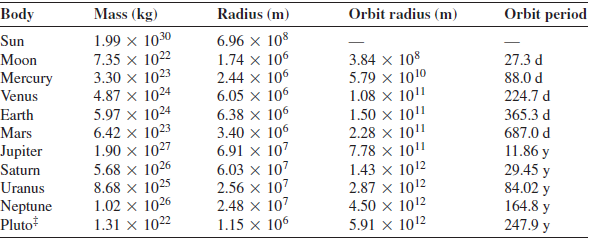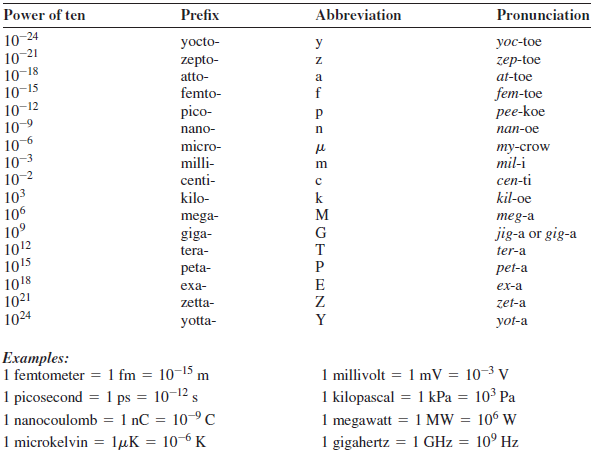Question:
On December 25, 2004, the Huygens probe separated from the Cassini spacecraft orbiting Saturn and began a 22-day journey to Saturn€™s giant moon Titan, on whose surface it landed. Besides the data in Appendix F, it is useful to know that Titan is 1.22 × 10
6km from the center of Saturn and has a mass of 1.35 × 10
23kg and a diameter of 5150 km. At what distance from Titan should the gravitational pull of Titan just balance the gravitational pull of Saturn?
Appendix F:
Fundamental Physical Constants*

Other Useful Constants*

Astronomical Data€

Prefixes for Powers of 10

Transcribed Image Text:
Name Symbol Value 2.99792458 x 10® m/s 1.602176487(40) × 10-1º c 6.67428(67) × 10-1! N •m²/kg² 6.62606896(33) × 10-34 J .s 1.3806504(24) × 10–23 J/K 6.02214179(30) × 1023 molecules/mol 8.314472(15) J/mol · K 9.10938215(45) × 10-31 kg 1.672621637(83) × 10-27 kg 1.674927211(84) × 10-27 kg 4m x 10-7 Wb/A•m 8.854187817... × 10-12 C²/N• m? 8.987551787... × 10º N • m²/C² Speed of light in vacuum Magnitude of charge of electron Gravitational constant G Planck's constant Boltzmann constant k NA Avogadro's number Gas constant Mass of electron me Mass of proton Mass of neutron Permeability of free space Permittivity of free space 1/Học2 1/4πεο Mechanical equivalent of heat Standard atmospheric pressure Absolute zero Electron volt Atomic mass unit Electron rest energy Volume of ideal gas (0°C and 1 atm) Acceleration due to gravity (standard) 4.186 J/cal (15° calorie) 1.01325 x 10° Pa 1 atm OK -273.15°C 1.602176487(40) × 10-19 J 1.660538782(83) x 10-27 kg 0.510998910(13) MeV 22.413996(39) liter/mol 9.80665 m/s? 1 eV mc²











